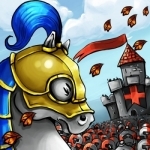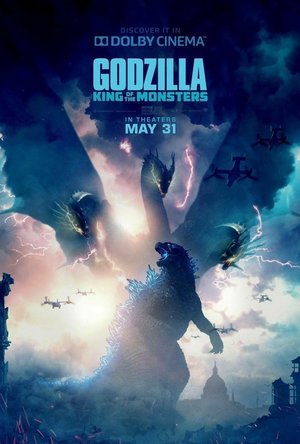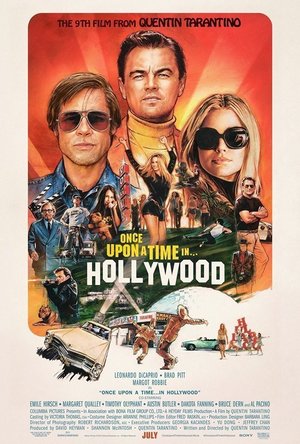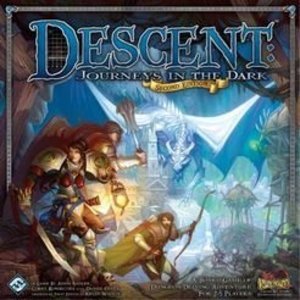
Masculin Féminin (1966)
Movie
Paul is a young, romantic idealist who finds himself entwined with an up-and-coming pop star named...
French New Wave Masculine Feminine 15 Specific Events 15 faits précis La Nouvelle Vague
B (62 KP) rated The Lovely Bones in Books
Oct 14, 2018

The Knight Watch
Games, Entertainment and Stickers
App
"A refreshing modern twist on the most familiar game of them all." - Pocket Gamer "Knight Watch is...

Informant - Agenda, Tasks, Notes Planner
Productivity and Business
App
Informant is a professional day planner integrating calendaring and powerful task management, along...
Gareth von Kallenbach (980 KP) rated Godzilla: King of the Monsters (2019) in Movies
Jun 19, 2019
Dr. Emma Russell (Vera Farmiga) and her daughter Madison (Millie Bobbie Brown) have developed a device known as Orca that will allow them to communicate with the creatures using specific sonic frequencies.
After a successful test under duress; the duo are captured by a ruthless Eco Terrorist group who want to use the giant creatures for their own objectives.
This leads to a chase around the world with Monarch attempting to stop them and with Emma’s ex-husband Mark (Kyle Chandler) deeply involved though he is deeply divided as he blames Godzilla for the loss of their son.
When a gigantic creature is freed; Godzilla faces his greatest challenge as there is a race against time to save the world.
While the film has some very impressive visual effects, the film drags as aside from a couple of brief encounters; the audience is required to sit through roughly 90 minutes of plodding story to get to the action which is roughly only the last 15-20 minutes of the film.
The human characters were very disinteresting and many of the international cast looked at times like they were sleepwalking though their lines as they seemed to have a real lack of passion for what they were given to work with.
The human characters were also very annoying and I found myself hoping that they would be taken out by the creatures as I had no connection to them and they did not inspire any sympathy.
While it may possibly appeal to hardcore fans, this was a miss for me as there simply was not enough creature action to counter-balance having to sit through the human characters and plodding plot to get to the good stuff.
http://sknr.net/2019/05/29/godzilla-king-of-the-monsters/
BankofMarquis (1832 KP) rated Once Upon a Time in Hollywood (2019) in Movies
Jul 31, 2019
Your enjoyment of this film will be in direct correlation with how you reacted to the previous statement.
Lovingly set in Hollywood of the late 1960's, OUATIH tells the tale of 3 performers in LaLa Land who's stories are undercut by - and eventually intersect with - the growing dread of the Hippie CounterCulture of the time and, specifically, the Charles Manson cult that would erupt in violence.
Leonardo DiCaprio stars as fading Cowboy star Rick Dalton who has been relegated to guest starring villain roles on TV and is contemplating a move to Italian "Spaghetti" Westerns. This is DiCaprio's strongest acting job in (perhaps) his career and one that showcases his range as a performer - and he nails it. His Rick Dalton is a real human being. Sometimes confident, often times at odds with himself, and filled with self doubt. It is a bravura performance, one that I am confident we will be hearing a lot more of come Awards season.
Ably counterbalancing him - and providing the strong core to this film - is Brad Pitt's Cliff Booth, Rick Dalton's stunt double, who is just trying to live day to day. He is the quintessential Hollywood/California "whatever" dude who blows with wherever the wind blows him - including into questionable places. This is Pitt's strongest performance in (perhaps) his career as well - and if Pitt wasn't there to provide the strength and core to this film than DiCaprio's performance would be seen as cartoonish and over-the-top, but this counterbalance is there, which strengthens both performances. I'm afraid that DiCaprio will win all the Acting Awards accolades (his part is much more flashy/flamboyant), but I think Pitt is every bit as good and I would LOVE to see his name called during Awards season.
There are many, many actors making extended cameos in this film, from members of the Tarantino "stock company" like Michael Madsen, Bruce Dern, Kurt Russell and Zoe Bell to newcomers Timothy Olyphant, Emile Hirsch, Margaret Qualley, Dakota Fanning and Al Pacino - all have a scene (or 2) that (I'm sure) each actor saw as "delicious" and their willingness to go along with whatever Tarantino wanted them to do is apparent on the screen.
Faring less well is Margot Robbie in the underwritten role of real-life actress Sharon Tate who met her death at the hands of the Manson cult (this isn't a spoiler, it's a footnote in history). Her role is tangential to the main story of the DiCaprio/Pitt characters and it feels...tangential. Robbie does what she can with the role, but she is under-served by the script and direction of Tarantino.
So let's talk about writer/director Quentin Tarantino. A self-described "movie buff", Tarantino spares no detail in showing the audience the sights and sounds of a bygone era - Hollywood in the days of transition from the studio system to a more "television-centric" system. His visuals are wonderful and you spend the first 2 1/2 hours of this 2 hour, 45 minute film meandering through scenes/scenarios/people that are filled with mood and atmosphere and REALLY, REALLY GREAT music, but don't really seem to go anywhere. I was (pleasantly) surprised by how little violence/blood is involved in this and I give Tarantino - the director - credit. For he plays with audiences expectations of him, this movie and the actual, real-life events of this time. While this film is an homage to specific time, it is undercut by an impending sense of doom that keeps you on edge. It is the journey, not the destination that is the joy of this part of the film.
But, when all these disparate storylines/scenerios/characters and events eventually collide, the final 15-20 minutes of this film is quintessential Tarantino - exploding in violence that is horrific, bloody - and damned funny. It is an auteur in full control of his faculties and he controls the items in his "play-set" superbly to bring this film to a very satisfying climax for me.
But...this film is not for everyone. Some will LOVE the first 2 1/2 hours and HATE the last 15-20 minutes while others will LOVE the last 15-20 minutes, but wonder why they had to suffer through the first 2 1/2 hours. For me, I LOVED IT ALL. It is one of the very best Writer/Directors of our time operating at the top of his game - driving some "A-List" actors to career-best performances.
And that's good enough for me.
Letter Grade: A
9 (out of 10) stars and you can take that to the Bank(ofMarquis)

Weather Nerd - Forecasts & Radar
Weather and Utilities
App
Weather reports, forecasts, and radar for weather nerds! ***** Featured by Apple, MacRumors, CNet,...
Rachel King (13 KP) rated A Short History of Myth in Books
Feb 11, 2019
In seven chapters, Armstrong takes a simplified stroll through history, focusing on the concept of myth and its impact on civilization. All throughout the book, she attempts to support her claim that a person can believe in myths without believing that the myths are actually true, and that the failure of modern society is by not following her specific edict. While this notion strikes me as absurd, I keep reading because, hey, it's a short book.
While I know only bits and pieces about many of the world's religions, I do know both the history and the holy book of my religion, Christianity. It becomes apparent to me early in the text that she is masking her opinions and interpretations of this religion as actual fact, so I can only imagine how she misconstrues other religions.
Her citations were lacking to me, with many claims going unsupported, others only partially supported, such as citation #84 and #30, and some citations simply not even applying to the specified text, such as citation #87. In citation #55, she claims that the Bible contains a Creation myth in which God brings the world into being by killing a sea monster, but one of the four verses she cites make no reference to anything of the sort (Job 3:12), and the other three (Isaiah 27:1, Job 26:13, Psalm 74:14) that do mention a leviathan cannot be interpreted that way when read in context. Isaiah is describing the end of days, while Job merely says that God created the serpent, and the verse in Psalm is within the context of a song about God rescuing the Hebrews from Egyptian slavery -- no relevancy to Creation. She makes the claim that Paul "was not much interested in Jesus's teachings, which he rarely quotes, or in the events of his earthly life." This claim is easily disproved by examining how Paul's words line up with Jesus's in John 5:21 vs. 1 Corinthians 15:22, Matthew 6:25 vs. Philippians 4:6, and many other passages.
While going through the citations, I got the feeling that the author depended on secondary sources for her information without actually studying the original source of her information. The book struck me as highly opinionated, vague, and too general for the topic being addressed. I have no doubt that there are better and more thorough books available on the topic of myth. I do not believe that I will be reading any more of Armstrong's works in the future.
Gareth von Kallenbach (980 KP) rated Tropico 6 in Video Games
Aug 14, 2019
Tropico 6 takes the familiar city builder game and turns it on its head a bit. You begin your life as El Presidente with the ability to customize the look and feel of your miniature ruler. Not only dealing with his/her physical attributes, but also defining their personality type. This provides special in-game bonuses which can affect your influence with the super-powers or even the internal factions themselves. Your next option is to design what your palace will look like, everything from roof-top holographic images of yourself, to the type of wall that surrounds your palace. While these are really nothing more than decorative facades on which you will build your spanning empire, it’s these little touches where Tropico really shines.
For those who haven’t played Tropico before, there is a two-hour tutorial that takes you through not only the basics, but some of the advanced concepts as well. It introduces the player to not only specific buildings, but also some of the more in-depth features that are provided. Concepts such as firing an individual from a building and closing the opening job requisition or identifying rebels and putting down uprisings are all covered in detail here. The tutorial however barely scratches the surface as to all the things that can be done. Thankfully Tropico 6 includes fifteen story missions that take you through numerous game concepts and challenges to build upon what the tutorial has taught you.
There are essentially two ways one can play Tropico 6, there are the story missions as well as the sandbox mode. While players will likely be quick to want to jump into Sandbox mode and begin cultivating their own island, there are compelling reasons to play through the story missions first. The story missions are not truly connected to one another, and while you must complete several to unlock them all, there isn’t an order in which you need to play them. If you go in order, the game will take you through the various “Era’s” that are new to the series. Starting with Colonial times where you regularly need to appease the crown until you can raise enough revolutionaries (or money) to claim your independence. Working your way through the World Wars (which roughly cover the events between World War I and World War II), into the Cold war and finally Modern Times. Each of the Eras unlock access to specific technology and buildings, ensuring that each Era provides a unique challenge to overcoming certain obstacles. Each story mission tasks you with a specific goal and places several obstacles in your way. Everything from claiming independence in the first mission, to going after the seedy underbelly of crime and bringing down a notorious kingpin. The story missions themselves last anywhere from one to several hours, ensuring plenty of game play in each one.
Tropico 6 brings a lot of new concepts and gameplay to the series. The game now takes place on a series of islands interconnected with docks and bridges. It’s easy to focus on your main island only to forget your others, and some missions will task you with specific goals that can only be created outside the main island. It’s a good introduction to thinking on a wider scale. Additionally, you can build a pirate cove that allow you to send pirates on raids. These raids involve everything from “rescuing” educated people or stealing wonders from around the world, like the Eiffel Tower or the Statue of Liberty. A new character known simply as “The Broker” provides opportunities to raise cash for your swiss bank account. The swiss bank account is a private account for El Presidente’ and allows him to purchase items from the Broker. These can be anything from blue prints that unlock buildings at a cheaper price, or the opportunity to automatically complete a demand without having to do the grunt work behind it. Election speeches also make their return to Tropico 6, elections are held every ten years to ensure you are keeping the people in your island nation happy. Lose an election and you lose the game, fairly straight forward. One opportunity to sway your people is to craft election speeches from the four categories. These include acknowledging an issue (like entertainment or health care), praising one of the four factions that exist on Tropico, blaming a super power (Axis or Allies) for the current state of affairs and finally making a promise to address a specific issue. Be warned however, that each of these choices can hold severe consequences and note that a promise to address a concern means you’ll be focusing on that before the next election.
Each of the folks who inhabit the island are individuals. You can literally select any person walking down the street and identify who they are, how they are leaning in the upcoming election, what political party they belong to and even where they work. If someone is a political rival you can bribe them to choose your side, if a particular set of rebels are causing issues you can have them arrested or locked up in an asylum. You can even execute any individual you want; however, this will have lasting consequences. The amount of detail is staggering; however, Tropico 6 does an excellent job of allowing you to be as micro managing as you want to be. While you can certainly go in and fire individuals from the various businesses that pop up, you certainly don’t have to.
Graphically Tropico 6 is a spectacle in itself. Everything from the waves as they slowly crash upon the shoreline, to the awe-inspiring sunsets. It’s certainly one of the most beautiful city builders around. Each building is unique enough to identify it easily and each has its own unique flavor all to itself. Even with all of this, I never encountered any hiccups in performance, and load screens are pretty much left to new games. Its soundtrack has a distinctive island flair to it, and while the longer you play the more repetitive it becomes, I never felt the urge to simply mute it. In fact, I found myself humming some of the tunes while doing chores around the house…yes it can get in your head like that.
Tropico 6 does have some flaws, but nothing truly game breaking. The road construction tool, while doing it’s very best to identify the best path you wish to take, will sometimes go a bit crazy. Spaces between buildings which should allow for careful road placement will be blocked for unknown reasons, which can force you to destroy existing buildings if you haven’t planned for expansion appropriately enough. With so much to do, some of the specific tools or buildings can be a bit difficult to find, in particular once you “acquire” a world wonder it took me several attempts to locate where you can go to actually place it. Again, nothing that stops the game in it’s tracks, and certainly some things that can easily be patched in later releases of the game.
Tropico 6 is all about freedom, the freedom to rule your tiny island kingdom the way you want. Well… at least the way you want as long as you can appease the numerous factions and ensure you get re-elected in the next general elections. You are free to do as much or as little as you want, and you are free to dig in as deep as any city builder type game allows you to go. The included stories ensure that you have at least 40-50 hours of defined content, but it’s the limitless playability of the sandbox setting where the game truly shines. The game isn’t perfect, but it’s about as close as city-builder games can get these days. It’s mix of humor, city management, and that one-more turn itch will keep you playing long after you told yourself you should go to bed. Long live El Presidente’! Viva Tropico!
What I liked: Variety of Story Missions, Excellent Tutorial, Amazing visuals
What I liked less: Road tool seems a bit finicky, some items are difficult to locate
Paul Kellett (118 KP) rated Descent: Journeys in the Dark (Second Edition) in Tabletop Games
May 4, 2019
With a couple of big-box and half a dozen small-box expansions, not to mention the various hero & monster packs, there is a ton of stuff available and if you own everything, you will be able to choose from 72 heroes with 22 different class decks; fight against 45 different monster types, and encounter around 15 lieutenants over a total of 182 different scenarios. That's plenty to keep you quiet for a while.
So many cards...
Descent: An Overview In The Dark
Descent is a scenario-based game where you work through a tree of different missions, choosing the next one based on whether the heroes or the Overlord worn the last. Each scenario will have specific objectives - anything from stealing an item and reaching the exit to interrogating prisoners and defeating a fearsome Lieutenant of the Overlord. Some of the monsters to be encountered are specified in the scenario text with other free groups able to be chosen from traits specific to that scenario. This gives some variety meaning you will never face exactly the same monsters if you replay the scenarios.
The good players choose a hero from the stack of basic skill types - Fighter, Healer, Scout or Mage and then choose from one of the many class decks for each type so the Fighter could be a Knight or a Berzerker, the Mage a Necromancer and the Healer a Bard, etc. These decks give each hero their skills and form their general strategy.
Meanwhile, the Overlord player chooses one of two Basic decks of cards that will form the base of his defence against the heroes. One deck is more about springing traps while the other has more things to enhance monster attacks. After choosing the basic deck, the Overlord can choose a specialist deck. These can be used to fine tune the Overlord's strategy and at first, only one card is available, the others will be purchased with experience points after each scenario. Finally, if the relevant expansion packs are available, the Overlord can choose a Lieutenant deck which adds further depth to his strategy and also offers the chance to bring a powerful figure into play later in the campaign.
Solo? How So? Redjak has the answer.
With all that going on, it sounds like a fairly daunting if not impossible task to play a solo game of Descent but a fan going by the name of Redjak created two card-driven AI decks - Redjak's Automated Monster Variant (RAMV) and Redjak's Automated Overlord Variant (RAOV). These decks both allow a player, or group of players to play the game as a fully co-operative experience with the cards replacing the Overlord player.
I will say that it is preferable if you have a grasp of the basic rules before jumping into these variants as there can be a lot going on if you are trying to learn the game and the solo rules at the same time. It's probably best to only choose two heroes at first as playing four heroes is more involved but ultimately more rewarding.
These variants are available to download and print out and are also available from the Printer Studio website if you search, although if you are not in the US, then shipping gets expensive.
RAMV
The Monster AI deck is the simpler of the two AI's, being just concerned with the monster actions and leaving out all the Overlord's cards. I haven't played much with this variant but the rules are fairly straightforward. You will set up 4 decks - an Event deck, a Dark Influence deck, a Conditions deck and a Monster deck.
After choosing a scenario to play, you draw cards from the Monster deck, finding ones with icons matching those of the current scenario. This keeps things random and you will always have different things to fight. The selected monster groups will then be placed in "Teams" underneath a row of team cards that will give them their activation order. Finally you will place the encounter objective card for the current scenario. This will give you specific things for each monster group to focus on in terms of stopping you from winning.
You will take your turn alternating hero and monster groups, drawing cards at various points when the monsters should react to attacks, certain scenario triggers ond other in-game events.
It is a fairly simple system but it works really well, giving a solid, straightforward dungeon crawl feel of exploring a map and fighting monsters while trying to complete your quest. Definitely a good starting point and good if you want a 'quick' dungeon crawl.
RAOV
This is the meat, the full experience. Although daunting at first, if you are familiar with the game rules (and have possibly played RAMV a bit), then it will make sense once you get stuck in.
RAOV differs over RAMV in only having one deck, but the rule book is more in depth describing how everything gets played.
You set up as normal, decide on what decks the Overlord will be playing with, draw his starting hand of cards placing them face up on the table. (This variant uses D10 dice anytime you have to make selections)
and take all your heroes actions. If at any point one of your actions would trigger an Overlord card, then that card is played and discarded. Having an open hand means that there are fewer surprises and the Overlord cant be as evil as a human player would be, but it is still tricky and knowing what cards might trigger forces you to think about your strategy in a different way.
Once the heroes have all activated, then the Overlord take its turn, playing any cards that would trigger at the start of the turn. Then, you flip over the top card of the AI deck and activate the first monster group. These cards have a primary target, shown by the corresponding hero symbol and several secondary targets. This gives the monster a focus for its actions. The main text of the card is a list of actions and essentially you work down the list doing whatever actions you are able. Each monster that activates will draw a new card and follow it's orders.
That in a nutshell is it. The Overlord's cards will trigger at the first available opportunity and the monsters will follow a list of options. Once you get used to it, it flows really well and doesn't feel too fiddly at all.
An Open Dungeon
As well as the two AI variants, Redjak also created Delven Deep - a deck of cards each displaying a different map tile that you can use to play a completely randomly generated dungeon crawl. I have yet to try this out, but it is another option if you don't fancy playing through a scripted scenario and just want to explore a random map, killing things.
For The Digital Generation
Fantasy Flight Games have also released an official, free companion app on Android, Steam and IOS that will take control of the Overlord player. This app comes with, I think 2 campaigns - a short training story and a larger, full campaign. Other campaigns a random dungeon generator are available to purchase in the app. None of the printed scenarios are playable using this app and it doesn't use any of the overlord cards, plot decks, event cards or encounter cards.
I will say that I am not a fan of apps for board games and it was actually this app in particular that soured me on the whole idea. Many people really enjoy this app and it has breathed a new lease of life into the game, but unfortunately on my first playthrough, it decided to crash near to the end of a campaign and I essentially lost 6 hours of gaming. I would have had to start all over again from the beginning. That was not a fun experience and put me off completely.
The app borrows heavily from Redjak's work, giving you a list of options to work through when activating the monsters, and various other triggers. Unlike the printed scenarios, all the maps in the digital stories are hidden until you explore them, so you never know what you will encounter. Also, there is a hidden timer in the program that means if you take too long exploring, fighting or whatever, then the game will start throwing nastier and nastier events at you. This makes the game much more of a race than its cardboard cousin and ramps up the difficulty at a fast pace making you feel like you never have enough time to do what you want.
In My opinion, RAOV is the best way to play Descent solo. It uses absolutely everything in the box and gives the most realistic feeling of playing the complete game.





